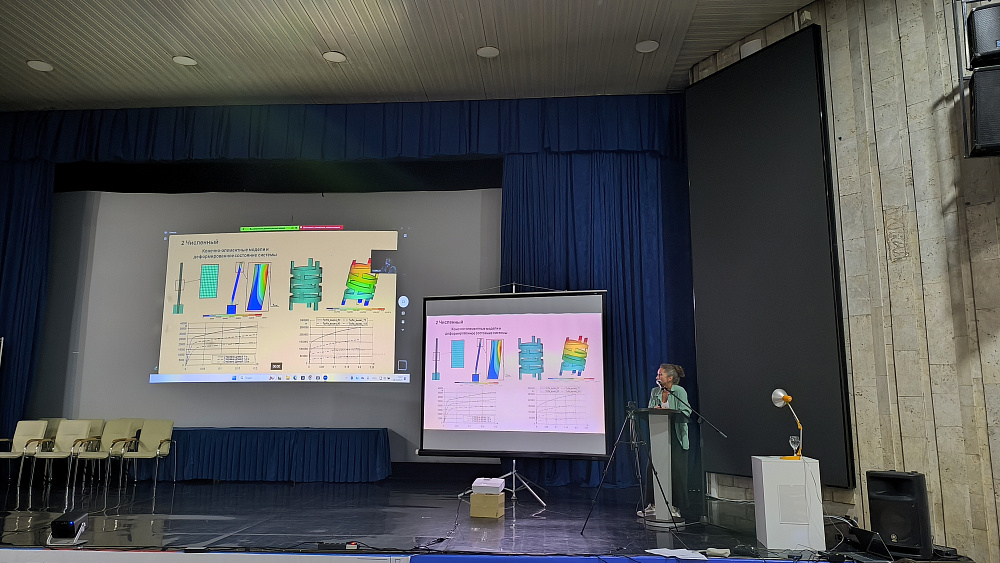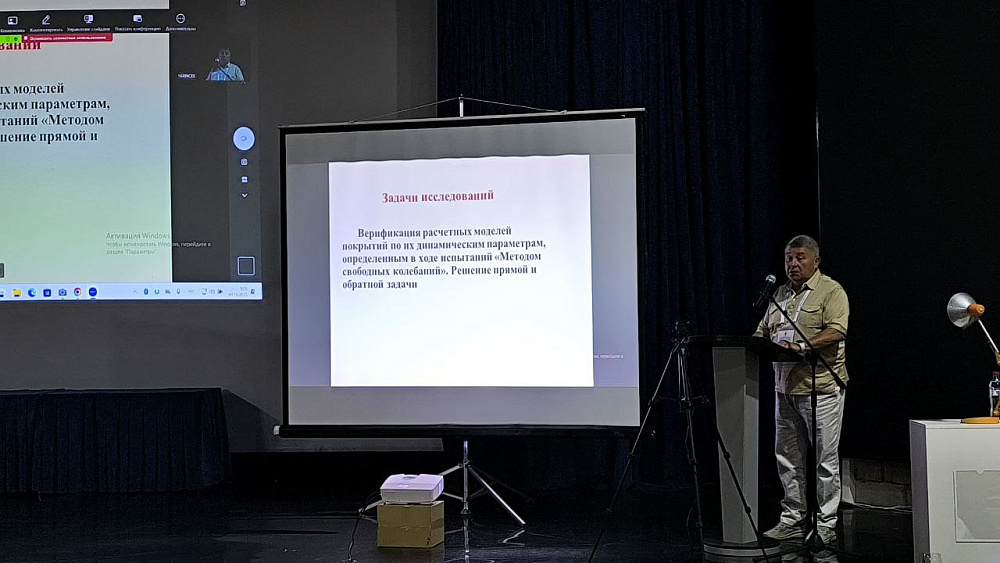From 5 to 11 October, the 16th Russian National Conference on Earthquake-Resistant Construction and Seismic Zoning was held in Sochi. The conference addressed such topical issues as seismic design standards in different countries, seismic protection, software calculations, and more. The earthquake that occurred in Kamchatka on 30 July became a high-profile topic. Experts discussed the results of seismic stations during the earthquake, the minute-by-minute occurrence of events, and concluded that the seismic event had been successfully managed.
The conference was attended by scientists and engineers from across Russia, as well as from Pakistan, India, New Zealand, Iran, Nepal, Belarus, Kyrgyzstan, Uzbekistan, and Kazakhstan. SPbGASU was represented by teachers from the Faculty of Civil Engineering.
Nadezhda Ostrovskaya, Associate Professor at the Department of Construction Mechanics, PhD of Engineering Sciences spoke at the "Seismic Isolation and Other Innovative Systems and Technologies for Seismic Protection" section, where she discussed the design and calculation methods for plastic dampers. She noted the enormous scientific contribution to the development of structural mechanics of Professor Yury Rutman, who recently passed away: "Yury Lazarevich was a very gifted and prolific scientist. Within the walls of SPbGASU, he educated more than ten PhD candidates and specialists in earthquake engineering. He organized a scientific school on seismic isolation, specifically plastic dampers of various configurations, which I will strive to continue. Yury Lazarevich's contribution cannot be overestimated." The report was dedicated to the publication in 2025 of the monograph “Plastic dampers: design, calculation, experiment”.
Olga Nesterova, Associate Professor at the Department of Construction Mechanics, PhD of Engineering Sciences, presented a paper at the "Application of CAD and Computational Modeling in the Design of Buildings and Structures" section on the consideration of vibration mode correlation in seismic impact analysis. "As part of my research on dynamic vibration dampers for seismic protection of buildings and structures, I discussed an important factor that must be considered when calculating earthquake impacts: vibration mode correlation. This is the influence of vibration modes on each other, and failure to consider this can lead to incorrect conclusions when assessing the seismic resistance of buildings and structures." The main conclusion of the study was that there are a number of structures for which consideration of correlation is essential in the analysis. It was proposed to introduce recommendations on considering correlation into standards.
Professor at the SPbGASU Department of Reinforced Concrete and Masonry Constructions, DSc in Engineering, Sergey Savin, moderated the section "New Design Solutions, Reinforced Concrete, Metal, and Steel Structures. Design, Construction, and Design of Earthquake-Resistant Buildings and Structures, Earthquake-Resistant High-Rise Buildings. Features, Problems, and Challenges of Safe Design and Construction." He also presented his own paper on "Verification of Calculation Models of Roofs Made in the Form of Large-Span Shells Based on Their Dynamic Parameters Determined During Free-Vibration Testing." Sergey Nikolaevich paid special attention to the Sakhalin International Theater Center named after A.P. Chekhov, which is located in the earthquake-prone city of Yuzhno-Sakhalinsk. During the discussion, the experts concluded that this method is highly effective.
This section also featured Sergey Tetushkin, an Assistant at the Department of Construction Mechanics, who presented a paper entitled "Improving the Analytical Method for Calculating the First Mode of Natural Vibrations of Building Structures Using a Correction Factor." In his report, Sergey shared some experimental and theoretical results from his research on a cantilever model of building structures with five concentrated masses, which, according to the regulatory document SP 14.13330.2018, is required for seismic impact analysis. These studies were conducted jointly with the Center for Integrated Seismic Testing.
Another participant in this section affiliated with our university was Sergey Mikhailenko, a graduate of the Leningrad Civil Engineering Institute (LISI, now SPbGASU), who presented a paper titled "Design of Facade and Window Structures." He shared his experience using translucent structures in Canada and presented SPbGASU representatives with his monograph, "The Practice of Constructing Translucent Facades and Other Glass Building Structures Based on Experience in North America."
At the section "Fire Safety of Buildings and Structures. Seismic and Fire Safety of Building Structures and Materials," Lyubov Morgun, Professor of the Don State Technical University, in her report "Foam Concrete for Improving Seismic and Fire Safety of Buildings," paid tribute to the "outstanding scientist of LISI," Professor Igor Aleksandrovich Lobanov, and presented the author's certificate "Raw Material Mix for Obtaining Cellular Concrete," obtained by I.A. Lobanov and Yu.V. Pukharenko in 1981.
Tatiana Belash, DSc in Engineering, Advisor to the Russian Academy of Architecture and Construction Sciences, and Visiting Professor at the SPbGASU Department of Metal and Timber Constructions, served as one of the conference organizers. As is traditional, the conference concluded with a roundtable discussion of pressing issues in seismic impact design standards, highlighting the undeniable relevance of the issues discussed and the importance of the results obtained through the research presented at the event.



